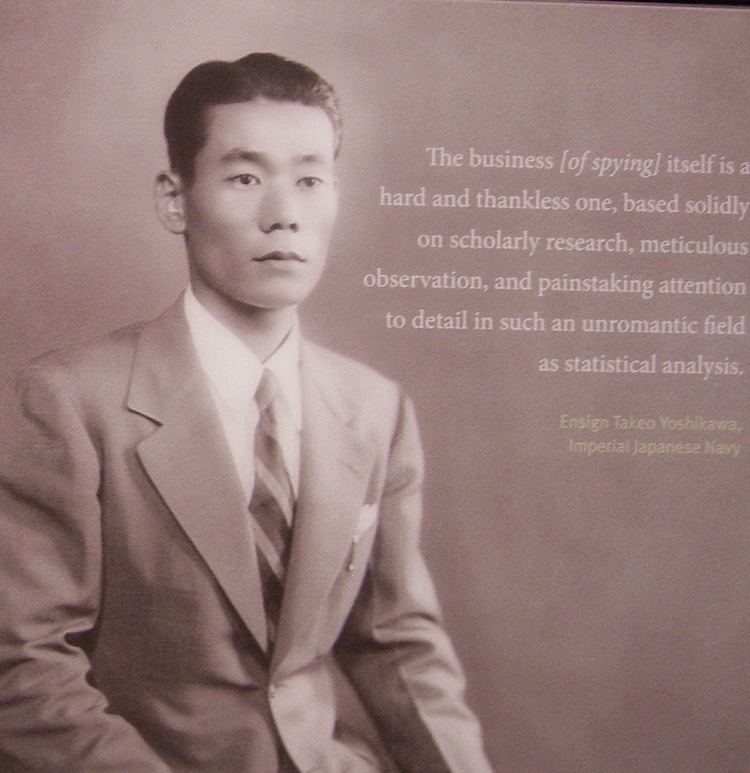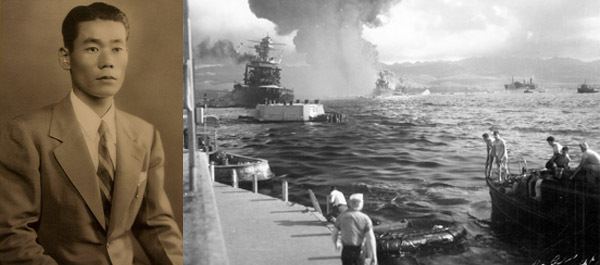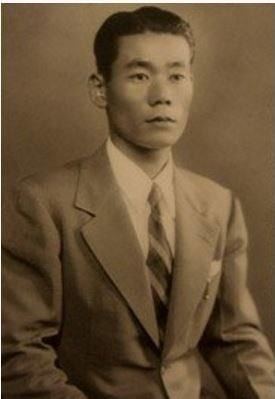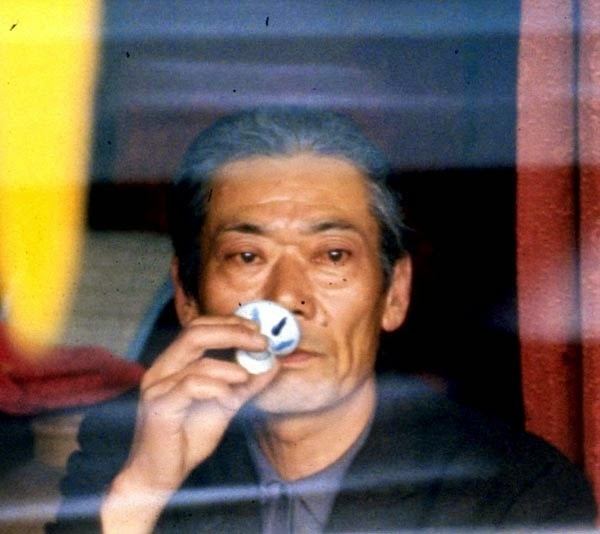Native name 吉川 猛夫 | Name Takeo Yoshikawa Years of service 1933-1936 | |
Battles and wars World War II, Attack on Pearl Harbor | ||
Takeo yoshikawa the spy who doomed the pearl harbour
Takeo Yoshikawa (吉川 猛夫, Yoshikawa Takeo, March 7, 1914 – February 20, 1993) was a Japanese spy in Hawaii before the attack on Pearl Harbor on December 7, 1941.
Contents
- Takeo yoshikawa the spy who doomed the pearl harbour
- Takeo yoshikawa
- Early career
- A spy in Hawaii
- Return to Japan and later life
- References

Takeo yoshikawa
Early career

A 1933 graduate of the Imperial Japanese Naval Academy at Etajima (graduating at the top of his class), Yoshikawa served briefly at sea aboard the armored cruiser Asama as well as submarines. He had begun training as a naval pilot near the end of 1934 when a severe stomach ailment prevented him from completing his training. He was subsequently discharged from the Imperial Japanese Navy in 1936. As a result, he briefly contemplated suicide.

A year later he began a career in Naval intelligence, being assigned to Navy Headquarters in Tokyo. He became an expert in the U.S. Navy, perusing every source he could possibly get his hands on. While on intelligence duty he intercepted a shortwave radio message in plain English that 17 troop transports were en route to England, having cleared the port of Freetown, Sierra Leone. He passed this information to the German Embassy, and many of the ships were destroyed as a result. Yoshikawa subsequently received a personal letter of thanks from Adolf Hitler. In 1940 he became a junior diplomat after passing the Foreign Ministry English examinations.
A spy in Hawaii

Because of his expertise on the U.S. Navy, Yoshikawa was sent to Hawaii under the cover of being a vice-consul named Tadashi Morimura (森村 正 Morimura Tadashi), arriving on March 27, 1941 with Nagao Kita (喜多 長雄 Kita Nagao), the new Japanese Consul-General aboard the liner Nitta Maru. He rented a second story apartment that overlooked Pearl Harbor and would often wander around the island of Oahu, taking notes on Fleet movements and security measures. He rented small planes at John Rodgers Airport and flew around, observing U.S. installations as well as diving under the harbor using a hollow reed as a breathing device. He also gathered information by taking the Navy's own harbor tugboat and listening to local gossip. He worked closely with German Abwehr agent Bernard Kuehn, as well as another former Etajima graduate, Kokichi Seki (関 興吉 Seki Kō'kichi), an untrained spy who served as the consulate's treasurer.

According to Yoshikawa, although some 160,000 persons of Japanese ancestry lived in Hawaii at that time, he never made use of this resource in his espionage activities. He and Seki agreed that, while Hawaii should be the "easiest place" to carry out such work in view of the large Japanese population, both looked at the locals with disdain. "[T]hose men of influence and character who might have assisted me in my secret mission were unanimously uncooperative...."

Although he had no knowledge of a planned attack on Pearl Harbor, Yoshikawa assumed that the intelligence would help prepare for such an eventuality and worked tirelessly to that end. His reports were transmitted by the Japanese Consulate in PURPLE code to the Foreign Ministry, which passed them on to the Navy. Although the code had been broken by American codebreakers and messages to and from Tokyo were intercepted and decrypted, communications between Tokyo and the consulate were considered low-priority because they contained so many messages that were entirely commercial in nature. However, one such message addressed to Kita (but actually to Yoshikawa) and sent on September 24, 1941 should have received more attention. It divided Pearl Harbor into five distinct zones and requested that the location and number of warships be indicated on a "plot" (i.e., grid) of the harbor. However, due to delays caused by staff shortages and other priorities the message was not decrypted and distributed until mid-October, and then dismissed as having little consequence. But it was the reports that he sent twice a week based on this request that enabled Admiral Isoroku Yamamoto to finalize his plan for the attack.."
When he heard the "East wind, rain" code phrase on the short wave radio bringing the news from Tokyo signaling an attack against America, Yoshikawa destroyed all evidence of his activities. When the FBI picked him up on the day of the attack, there was no incriminating evidence of his espionage. He eventually returned to Japan in August 1942 in a diplomat prisoner exchange. It was not known for some time that he was the chief Japanese agent in Hawaii.
Return to Japan and later life
Yoshikawa continued to work for naval intelligence during the remainder of the war. When the war ended and Japan was occupied by U.S. forces, he went into hiding (disguised as a Buddhist monk) for fear of being prosecuted for his role in the Pearl Harbor attack. He returned to his wife (whom he married shortly after his return from the U.S.) when the occupation ended.
Yoshikawa never received official recognition of his services during the war. In 1955, he opened a candy business but it failed as word spread of his role in the war. The locals blamed Yoshikawa for the war. "They even blamed me for the atomic bomb," he declared in one interview. Penniless and jobless, he was supported by his wife for the rest of his life via her position selling insurance. "My wife alone shows me great respect," said the old spy. "Every day she bows to me. She knows I am a man of history." He died in a nursing home.
Over the years, the mysterious spies of Pearl Harbor were always mentioned in passing in history books. While the Yoshikawa case appeared to retroactively justify the decision to intern Japanese Americans, he himself distrusted the Japanese-American community who in his mind were loyal to America over Japan.
